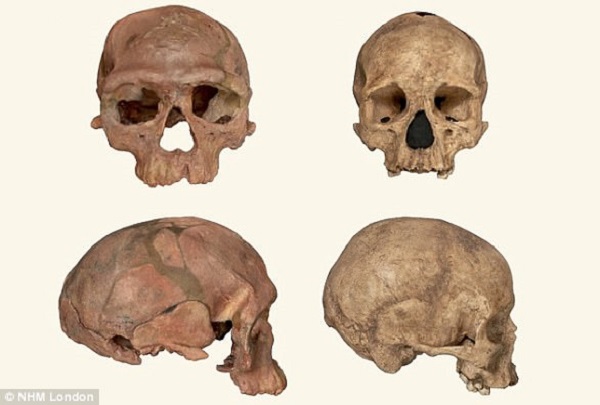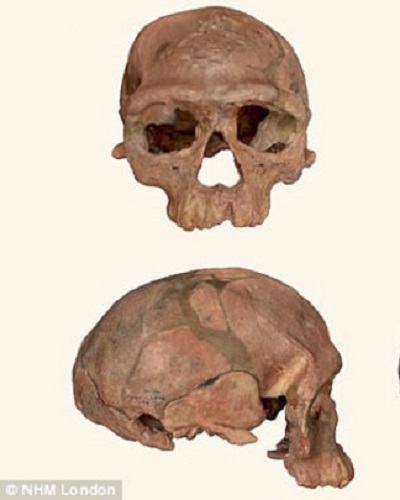The Oldest Fossil Remains of “Homo sapiens” Discovered in Morocco, Could Change Our View and Assumption On Much of The Evolution of Humans and Their Phylogenetic History
The oldest fossil remains of Homo sapiens have been recently discovered in a site in Jebel Irhoud, Morocco. This is 100,000 years older than previously discovered fossils of Homo sapiens that have been securely dated.
In this session, we will talk about the discovery and its implications in the evolutionary history of the modern human race.
The Discovery of Fossils
It was in the 1960s that mining started atop a large hill of limestone in Morocco. The miners hit a pocket of sediment and it partially collapsed to show a human skull, bones, and stone artifacts. Preliminary research has revealed the artifacts to be somewhat around 40,000 years old.
In 2004, efforts were done to excavate the site further to figure out its true age. It’s remained an active site ever since.
Also read on: The mystery! Who is the Itsekiri father of Nigerian blogger Linda Ikeji’s child?

Hublin and Abdelouahed Ben-Ncer of the National Institute of Archaeology and Heritage in Rabat, Morocco, found those human bones along with some animal bones, stone flints, and proof of fire in a maintained layer of the site.
Not many sites can document this type of proof dating back to 300,000 years ago.
By employing a dating technique called thermoluminescence, the experts determined the age of that the site to be anywhere between 300,000 to 350,000 years old.
This discovery is in contradiction to the theory that Homo sapiens were confined to East Africa. Hublin stated:
“I’m not claiming Morocco became the cradle of modern humankind,”
“Rather, we would support the notion that around 300,000 years ago, very early forms of Homo sapiens were already dispersed all over Africa. This is facilitated by the fact that between 330,000 to 300,000 years before present, Africa did not look like it does today and there was no Sahara Desert. There was a lot of connections between other parts of the continent.”
During that era, the Sahara region was effectively “green“, with vast open grasslands and groupings of trees. It also had rivers and huge lakes and was much wetter and more humid than it is today.
This type of environmental setting supported various animal life like gazelles, zebras, wildebeests, lions, and other big cats — all of which were discovered at the site through fossil evidence of animals that these Homo sapiens hunted.
The tools and proof of fire indicate that this site was linked with the Middle Stone Age.
At the time when these Homo sapiens lived, the site was supposedly a cave that sheltered them.
This recently found fossil is 100,000 years older than the previously discovered fossils of Homo sapiens which have been confidently dated to date.
The fossils, which have a partial skull & a lower jaw, are said to belong to 5 different individuals including 3 young adults, 1 adolescent & 1 child whose age is estimated to be around 8 years old.
While the facial features of the discovered skull look more like a modern human, the braincase is very elongated & likened to the obsolescent characteristic of early humans.

Implications
Increasing evidence has come in to point to the fact that the modern human lineage diverged from Neanderthals & Denisovans around 500,000 years ago, and hence we seem to be their close relatives rather than direct descendants.
It was earlier believed that the early modern humans from which we have evolved, were in Africa 200,000 years ago & they looked very similar to modern humans. But what happened in between that time?
This is an enigma although some researchers suggest the possibility that there were multiple groups of hominins, or human ancestors, overlapping and having complex relationships with each other.
As no known fossil evidence of Homo sapiens dating as back as 300,000 years ago was available before this, this discovery might help to fill a small part of that gap in the fossil record. These recent fossils provide us with a deeper understanding of this evolutionary time for Homo sapiens before the early modern stage some 200,000 years ago. Jean-Jacques Hublin, the lead study author, paleoanthropologist, and a professor at Max Planck Institute for Evolutionary Anthropology said:
“Our analysis convinced us that this material represents the very root of our species, the oldest Homo sapiens ever found in Africa or elsewhere,”
Hublin also said that if we had Homo sapiens from 300,000 years ago walking around today, they would look very similar to us –and appear to be wearing a hat. Their faces would be short, flat, and retracted in comparison to the Neanderthals, with some of their dental features would be similar to that ours.

Their elongated skull was the difference. Their brains, specifically the cerebellum, had a different shapes. But going by the size of the braincase the research team discovered that these Homo sapiens had a larger cerebellum compared to that of the Neanderthals.
“The story of our species in the last 300,000 years is mostly the evolution of our brain and in this time period, a number of mutations occurred affecting brain connectivity,”
Hublin said.
The Next Process
Sequencing of the previously found Neanderthal & Denisovan genomes happened at the Max Planck Institute for Evolutionary Anthropology, but that could not be done on these fossils.
The DNA could not be extracted from these fossil bones. Ancient DNA has yet to be recovered from Africa since the discovered fossils are often too old and the hot conditions have made it difficult.
The scientists plan to return to the site as there is still more to be unearthed.


